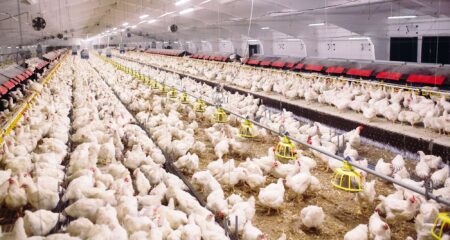Key Takeaways
- Cooler weather settled across much of the Midwest after a hot start to the week.
- Dryness and drought expanded in parts of the central U.S., contrasted with locally heavy showers in some areas.
- Rainfall helped maintain soil moisture in the Upper Midwest, while the High Plains saw drought relief and worsening conditions.
Weather patterns varied across much of the U.S., according to the latest U.S. Drought Monitor. Dry weather in many areas across the central and eastern U.S. led to declining topsoil moisture reserves. Later in the week, cooler air arrived across the North and areas east of the Rockies, except for the northern High Plains and the Deep South.
The upper Midwest experienced patchy downpours that maintained adequate to excessive soil moisture. Meanwhile, locally heavy showers dotted the central and southern Plains and the lower Southeast.
Cool Weather
“Cooler weather is the main story across Wisconsin,” said Nick Groth, an agronomic service representative for Syngenta Crop Protection in Wisconsin. “Last week started out seasonable, but by the end of the week and through the weekend, temperatures trended below normal. Looks like cooler weather, especially low nighttime temperatures, will be the norm for the next seven days.”
It finally cooled off for Ryan Gentle, a Wyffels agronomy manager based in west-central Illinois. While it was brutally hot for the first part of the week, including elevated low nighttime temperatures and humidity, there was a nice change of pace, he shared.
“It cooled off nicely for the weekend,” Gentle said. “Most of the area got between ¼ to 1 inch of rain, with heavier amounts from Canton to the north.”
Dry Conditions
Despite a turn toward cooler weather, coverage of abnormal dryness (D0) and moderate drought (D1) broadly increased from Missouri into the Ohio Valley and lower Great Lakes regions.
Drier than normal weather in the southern and eastern Corn Belt generally contrasted with locally heavy showers farther north and west, according to the U.S. Drought Monitor.
“The past week has finally started to dry out throughout my area,” said Jared Goplen, a Wyffels agronomy manager in northwest Iowa, southern Minnesota, and eastern South Dakota. “There were some showers earlier in the week, but by Friday, a cool front has moved in, which has brought with it good sunshine and cool temperatures.”
In the latest USDA Crop Progress Report, topsoil moisture was rated at least one-half very short to short in Kentucky at 66%, Michigan at 55%, and Ohio at 51%. Statewide values were above 40% very short to short in Illinois and Indiana.
“Drought conditions exist,” said Phil Krieg, an agronomy service representative for Syngenta in Illinois. “Cooler temperatures and off-and-on overcast skies are providing some relief. But the forecast does not give us much hope, for rain and 90°F-plus temperatures are back in the forecast after Labor Day.”
The High Plains region experienced a mix of drought improvement and deterioration. The western sections of Colorado and Wyoming are experiencing the most significant drought for the region.
According to the USDA, statewide topsoil moisture was rated 70% very short to short in Wyoming. For the week, the most significant drought improvement occurred in central Colorado, with targeted improvements in Kansas, Nebraska, and South Dakota.


:max_bytes(150000):strip_icc()/SuccessfulFarmingShareImage-8fed6410b43147a19ed5ea1e3243227f.png)

:max_bytes(150000):strip_icc()/IMG_7575-ac6db3006a2145109bcc2df421c7a962.jpeg)


:max_bytes(150000):strip_icc()/100882037_corn-48fb465bdbd94cdb93683780a5e32212.jpg)


:max_bytes(150000):strip_icc()/Markets-3-Corn-up-3-19bdbeee0041452db8bce0a0f1c8b883.jpeg)
